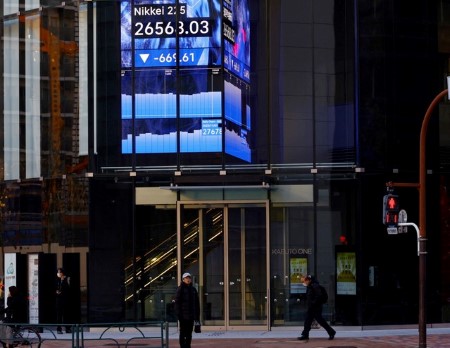




Monthly Economic Update: One for the road
 DOWNLOAD
DOWNLOAD

Inflation Update: Still low, still slow
 DOWNLOAD
DOWNLOAD

Philippines Trade Update: Exports momentum continues
 DOWNLOAD
DOWNLOAD


Political, market volatility spice markets up

Investor sentiment is fragile as Asian markets reach the mid-point of the week, with bubbling angst and political volatility across the emerging world compounding deepening concern over US and global economic growth.
Indian assets, in particular, have been on a wild ride this week in response to the country’s general election result, a strong safety bid is driving the Japanese yen higher, and regional stocks are now down four out of the last five days.
That’s the backdrop to a jam-packed economic calendar across the region, which includes: Australian first-quarter GDP, revised GDP data from South Korea, service sector purchasing managers index data from Australia, China and India, as well as inflation from Thailand and the Philippines.
These indicators will go a long way to setting investors’ policy expectations for the region. Rate cut hopes are also likely to mount if the prospects for greater Fed easing continue to grow – almost 50 basis points of US rate cuts this year are now being priced in, up from around 30 bps last week.
The latest indicator to suggest the US economy is cooling was the ‘JOLTS’ report that showed job openings fell more than expected in April, pushing the number of available jobs per job-seeker to its lowest in nearly three years.
Wall Street ended mostly flat, despite Treasury yields falling for a fourth day. Equity bulls might argue that Wall Street has held up well in the face of renewed growth concerns, but riskier markets will need more than that.
What does Wednesday have in store for Indian markets? Stocks surged 3.4% to new highs on Monday after exit polls suggested Prime Minister Narendra Modi would extend his majority, but tumbled 5.7% on Tuesday as it became clear he would actually lose it.
Analysts at Barclays reckon market reverberations will be felt for a while yet, a premium will be put back into Indian bonds, and the central bank will maintain its presence in the FX market to limit volatility and weakness in the rupee.
Volatility in the yen is also picking up, with short-term implied volatility in dollar/yen on Wednesday jumping the most in a month as the dollar tumbled below 155.00 yen.
If there is a safe-haven bid in FX right now, it looks to be going to the yen, which has the potential support of the world’s largest repatriation flow.
Japan is the world’s largest creditor with a net USD 3.36 trillion invested overseas, more than half of that in equity and debt portfolio assets. Even a sliver of that brought back home can lift the yen.
Here are key developments that could provide more direction to markets on Wednesday:
– Australia GDP (Q1)
– Indian market volatility
– China, India, Australia services PMIs (May)
(Reporting by Jamie McGeever)
This article originally appeared on reuters.com





 By Reuters
By Reuters